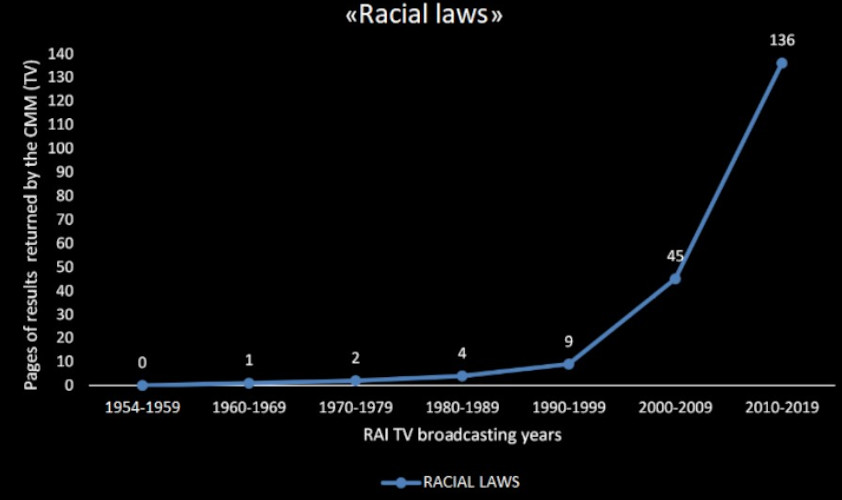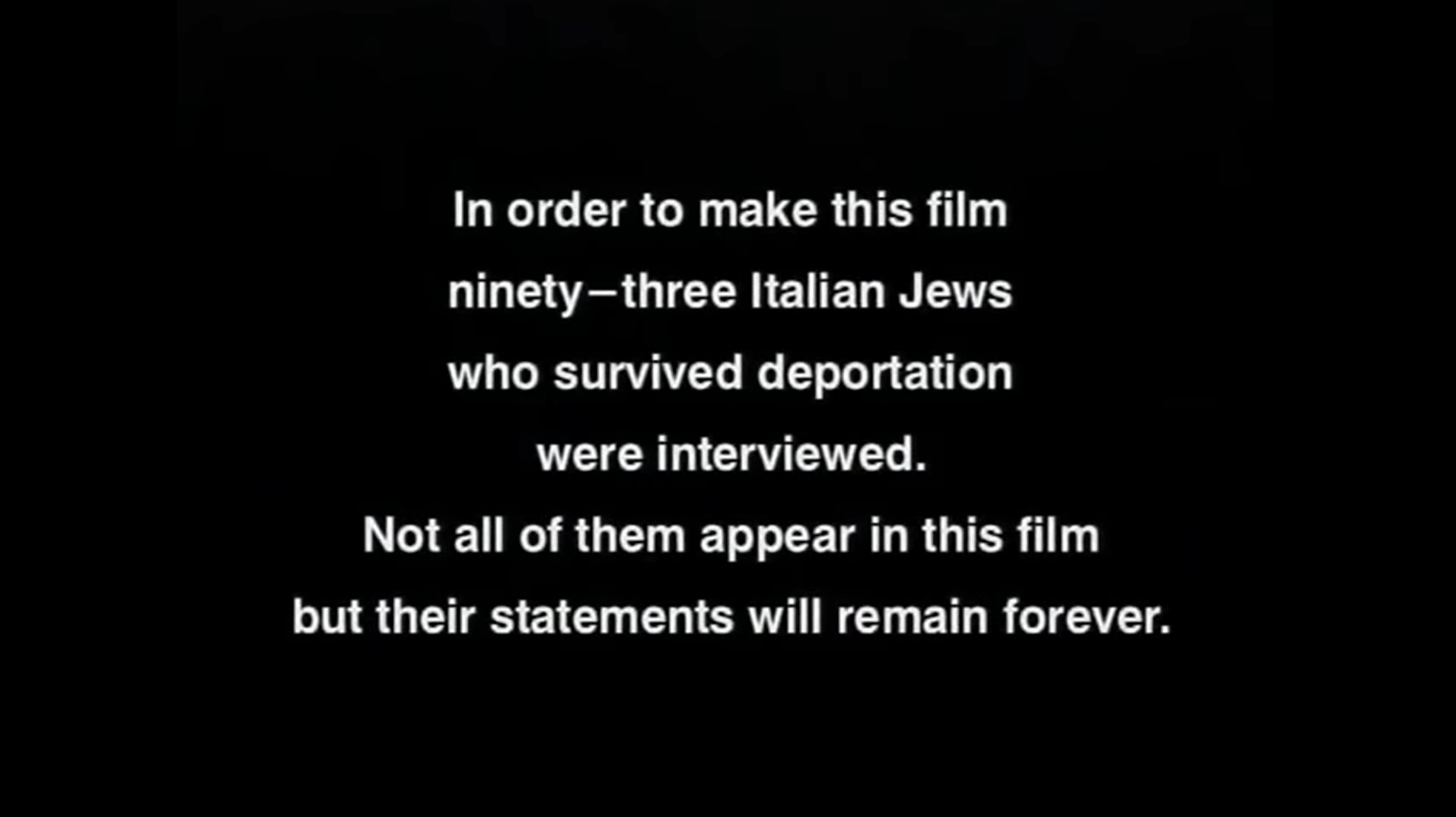RAI TV
1997: Memoria. I sopravvissuti raccontano
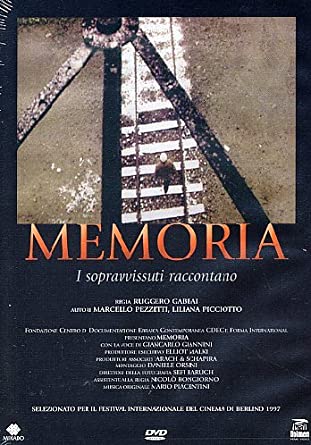
Public awareness of the importance of the Shoah and with it of the Fascist Racial Laws increased in the 1990s, thanks to a combination of successful movies on the topic, political changes and new historical research (see below sections: Culture and Politics; Historiography and Memorials). This was also reflected on the small screen, where the issue was raised more frequently and was addressed in a different way. 1997 in particular is the "Year of the Shoah" on Italian screens, with a succession of television and film events on the subject. These includes a TV Special on RaiUno for the release of the film La tregua(“The Truce”) in February; another prime-time RaiUno Special on Primo Levi in April for the tenth anniversary of his death; the television premiere of the movie Schindler's List in May, which preceded by a debate and followed by a documentary on the subject had record ratings (12.3 million viewers and 50% share); and finally in December the release in movie theaters of the very successful film Life is Beautiful.
In fact, our research in the Rai Catalogue shows an increase in the number of programs broadcast by the State television on the subject as of 1997 (see table below).
One of these is precisely Memoria. I sopravvissuti raccontano (“Memory. The Survivors Narrate”), a documentary produced by historians Marcello Pezzetti and Liliana Picciotto and directed by Ruggero Gabbai, for the CDEC (Center for Contemporary Jewish Documentation), which is broadcast on Rai2 on April 16 at 8.50 p.m. The quality of the production, valorised by a prime-time broadcast, led to audience ratings of up to 7 million viewers. The documentary is also rerun in subsequent years. Here are some extracts (courtesy of the producers, CDEC and Forma International).
Escape attempts
A similar not very commendable image emerges from Goths Herksovits Bauer’s account of the organizations that had found a way to exploit the desperation of the persecuted Jews trying to escape to Switzerland by scamming them. The arrest was followed by prison and then deportation to Auschwitz. Ms Bauer was the only one of her family to survive.
1997: Moviola della Storia
Moviola della storia. La deportazione By Gianni Bisiach, aired on Rai International on October 25, 1997 (Clip ID: F239088).
In this same year 1997, also Rai International, the TV channel broadcasting for the Italians abroad, produces a program on these issues, curated by Gianni Bisiach. Two survivors, Pietro Terracina and Settimia Spizzichino, are interviewed in the studio. The historian Giovanni De Luna, also partecipating, begins to dismantle the “Italians are good people” stereotype. The impact on the Italian public is limited, given the TV channel it was broadcast on, but the program signals the beginning of a changing attitude on the issue.
Historiography and Memorials
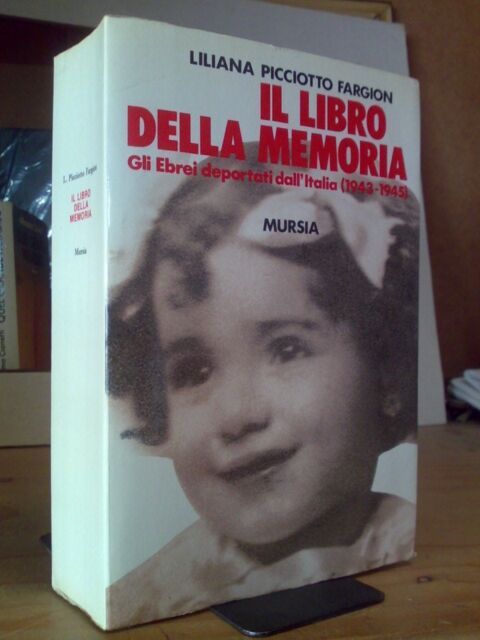
Il libro della memoria
1991: Based on a decade of research, Il libro della memoria ("The book of memory") painstakingly reconstructs the names and the fates of the Italian victims of persecutions, thus helping to show the racial discriminations as tough, widespread and pervasive, also in tehir application.
Author:
Liliana Picciotto
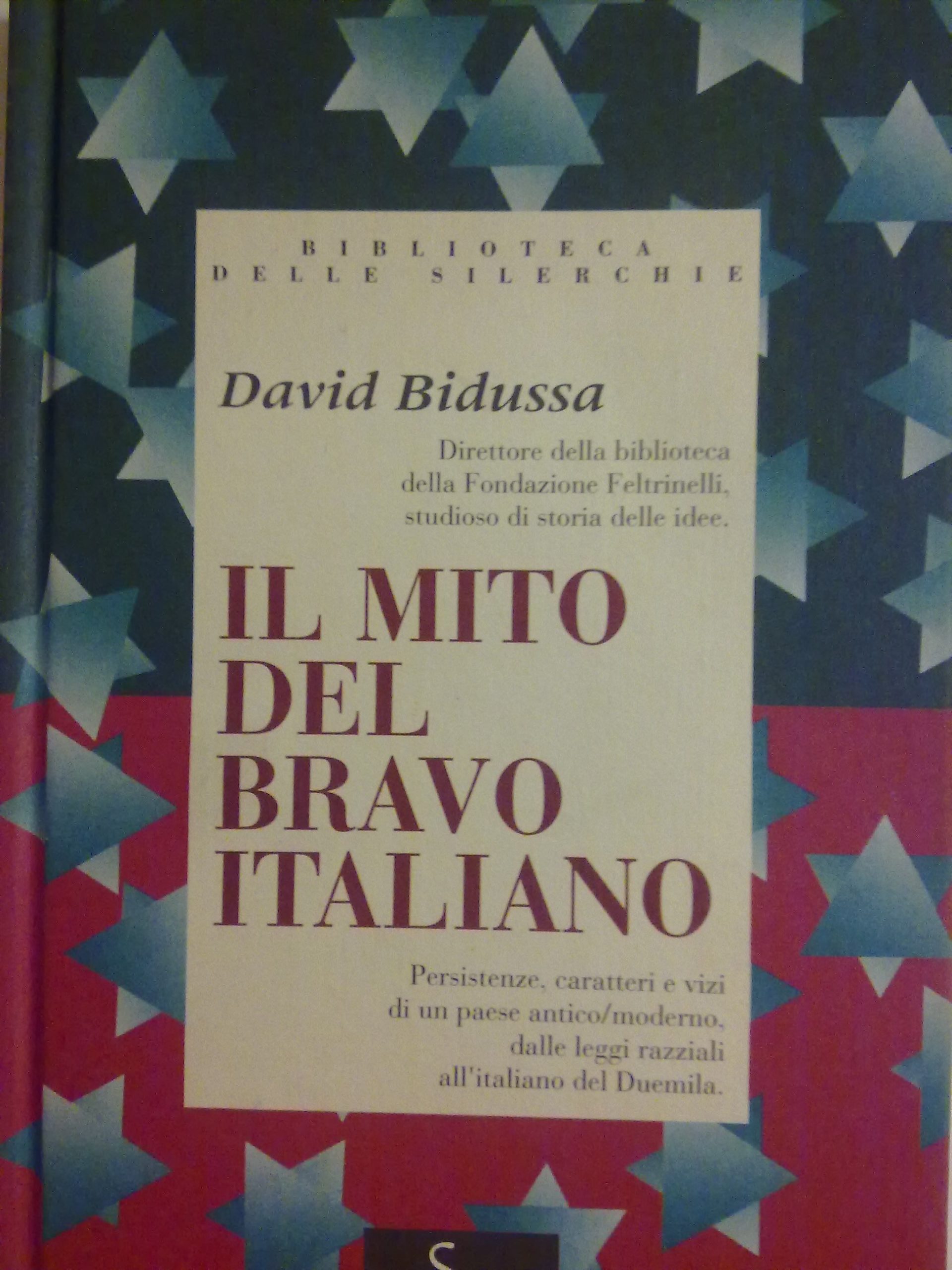
Il mito del bravo italiano
1994: The issue is further defined thanks to new research carried out by M. Sarfatti, 'Mussolini contro gli ebrei. Cronaca dell’elaborazione delle leggi del 1938' - (“Mussolini against the Jews. Chronicle of the elaboration of the laws of 1938”), to a traveling exhibition on the theme called La menzogna della razza. Documenti e immagini del razzismo e dell’antisemitismo fascista (“The Race Deception. Documents and images of Fascist racism and anti-Semitism”) and to David Bidussa’s "Il mito del brano italiano" (The myth of the good Italian"). Straight from the title, Bidussa’s work refutes the idea of the “good Italian” and states: "it is commonplace to believe that in Italy there has been no racism but only a body of laws, moreover, applied loosely. This finding is false”. (p. 69).
Author:
David Bidussa
Culture and Politics
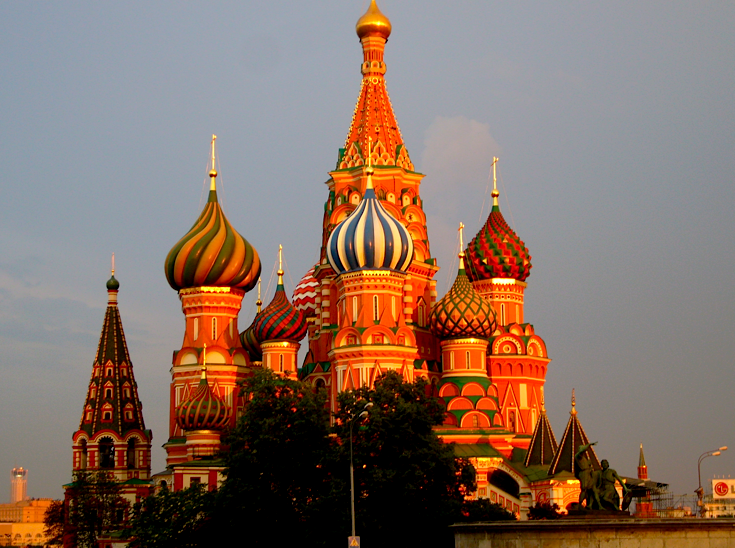
1991: The dissolution of the USSR. The end of the Cold War and of the opposing ideologies contributed to a renewed political culture that favored a reconsideration of historical interpretations.
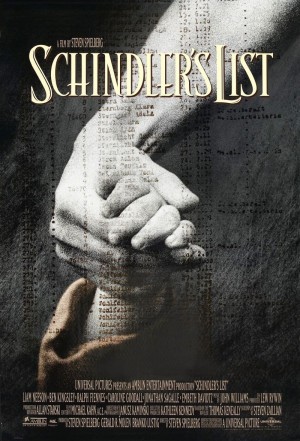
1993: “Schindler's List”, directed by Steven Spielberg, is released. It narrates the Shoah through the story of the Nazi industrialist who saved 1200 Jews by using them in his factories. The movie won 7 Oscars and was acclaimed by critics and audiences worldwide.
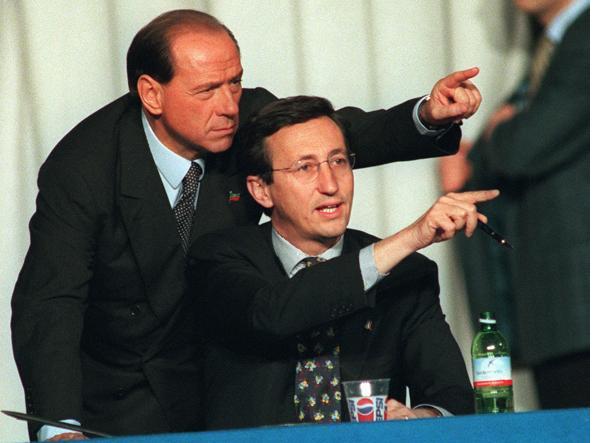
1994: After the judicial and political storm of the investigation Tangentopoli (1992-1993) and the end of the "First Republic", Silvio Berlusconi brings the center-right to the government, including Alleanza Nazionale (AN), the party successor of the post-Fascist MSI (Italian Social Movement), if then in the process of abandoning their prior neo-Fascist nostalgies. This new political context paves the way to fierce debates and historical revisionisms on Fascist.
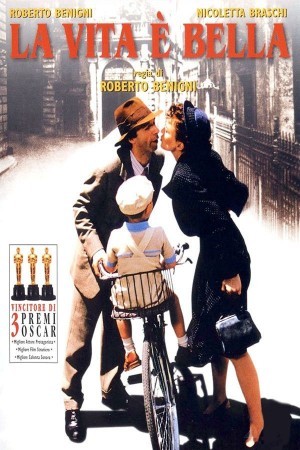
1997: Life is Beautiful premieres in Italy. Directed and interpreted by the popular comedian Roberto Benigni, the movie centres on an Italian Jew deported to Auschwitz. The film is an overwhelming success beating all box-office records in Italy and receives widespread acclaim also abroad, winning 3 Academy Awards, including the one for the Best Foreign Film. Acting as consultants for the film are the historian Marcello Pezzetti and the Lager survivor Romeo Rubino Salmonì (see his testimony above, in the documentary 'Memory').
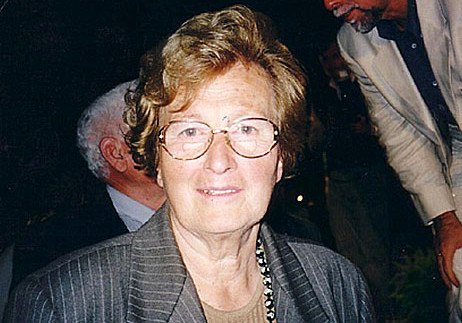
1998: The government sets up the “Anselmi Commission”, named after her president, the well-respected politician Tina Anselmi, to investigate the matter of "property stolen from Jews" during the persecutions. Part of these were never returned. The results of the investigation are impressive (see the “Numbers” section below).
The corpus of documents
How many rai tv programs have dealt with racial laws?
A search of “Racial Laws” on the Rai MultiMedia Catalogue (CMM) gives 2601 results (data updated to February 2020). Beyond the numbers, we want to point out the growth over the decades, which is only partially explained by the increase in television channels and the improvement of conservation practices and cataloging systems. In particular, note the marked increase as of 1997, and a “boom” in productions in the 2000s. As can be seen from the table and graph, this decade saw up to five times the number of programs on the subject compared to the previous decade.
CMM results for "racial laws" (1 page = 10 programs or sequences)
| Decade | n° page |
|---|---|
| 1954-1959 | 0 |
| 1960-1969 | 1 |
| 1970-1979 | 2 |
| 1980-1989 | 4 |
| 1990-1999 | 9 (of which 7 after 1997) |
| 2000-2009 | 45 |
| 2010-2019 | 136 |
